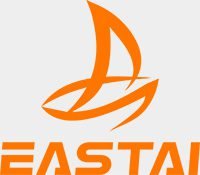Definition of hydraulic cylinder stroke
What is hydraulic cylinder stroke
Hydraulic cylinder stroke refers to the distance from the piston rod in the hydraulic cylinder to the fully extended position. This value is an important parameter to measure the performance of the hydraulic cylinder and directly determines the working range of the hydraulic cylinder. The stroke of the hydraulic cylinder is generally measured in millimetres or inches and is an important factor in the design and selection of hydraulic cylinder models. For different application scenarios, the stroke length directly affects the operating efficiency and applicability of the equipment.
The role and significance of the hydraulic cylinder stroke
The role of the hydraulic cylinder stroke is to ensure that the equipment can perform the specified action within the specified range. For example, in an excavator application, the stroke of the hydraulic cylinder determines the working range of the excavator arm. In a hydraulic lift, the stroke determines the maximum height of the lift. Therefore, a reasonable design of the hydraulic cylinder stroke can effectively improve the working efficiency of the equipment, reduce energy consumption and extend the service life of the hydraulic cylinder and the equipment.
Importance of stroke in the movement of hydraulic cylinders
Influence on the working range and application scenarios of hydraulic cylinders
The stroke has a direct effect on the working range of the hydraulic cylinder. For example, in construction equipment, the stroke determines the reach of the digging arm or the height of the lift. Longer strokes are suitable for equipment that requires a large range of motion, such as heavy excavators, while shorter strokes are suitable for equipment that requires high precision operations, such as industrial automation machines.
Effect on equipment performance, motion accuracy and efficiency
Stroke length is related to the accuracy of the equipment’s motion. If the stroke is too short, the equipment cannot perform the task; if the stroke is too long, it may waste energy. In addition, the rationality of the stroke length also affects the overall efficiency of the equipment. For example, industrial robots require precise stroke control to perform complex automation tasks, while lifting equipment requires a smooth stroke to ensure safe operation.
Whether the stroke length and design of the hydraulic cylinder match
In the actual application of the hydraulic cylinder, the stroke length must match the design requirements. If the stroke design is inappropriate, it may result in uneven operation or even mechanical failure. For example, too short a stroke may cause the equipment to fail to perform the intended task, while too long a stroke may cause uneven force on the structure of the equipment, affecting its life. The space limitations and work requirements of the equipment should be fully considered during the design process.
How to measure the stroke of a hydraulic cylinder
Measurement steps
Determine the position of the piston rod when fully retracted and fully extended First adjust the hydraulic cylinder to the fully retracted position and record the start position of the piston rod. Then adjust the hydraulic cylinder to the fully extended position and record the end position.
Using a measuring tool (such as a ruler or tape measure), measure the distance from the start position to the end position of the piston rod. This is the stroke of the hydraulic ram.
Note: To avoid measuring errors
When measuring the stroke, make sure that the hydraulic cylinder is stationary to avoid inaccurate data due to the movement of the hydraulic cylinder during the measurement. At the same time, choose accurate measuring tools to reduce errors. For example, the use of a laser distance meter can record the stroke length more accurately. Also, pay attention to the temperature and humidity of the measurement environment to avoid the influence of thermal expansion and contraction of the material on the measurement results.
Common application scenarios for hydraulic cylinder stroke
Hydraulic cylinders are widely used in various types of mechanical equipment and their stroke design varies depending on the equipment requirements. Here are some common application scenarios:
Construction machinery
Hydraulic cylinders play a key role in construction equipment such as excavators, bulldozers and concrete pump trucks. These machines require a long stroke to perform complex tasks. For example, the stroke of an excavator’s hydraulic cylinder determines the telescopic range of its arm length, which affects the digging depth and the area it can cover.
Industrial equipment
Applications of hydraulic cylinders in industrial equipment include hydraulic lifts and freight elevators. This equipment requires precise strokes to ensure safe operation. For example, in a warehouse system, the stroke length of a hydraulic freight lift must match the stacking height of the goods.
Special equipment
Hydraulic cylinders are used in a wider variety of special equipment such as ships and harbour cranes. These scenarios require higher stroke and load capacities from hydraulic cylinders. For example, dockside cranes require long-stroke hydraulic cylinders to carry large containers while maintaining smooth operation.
Agricultural machinery
In agricultural machinery, hydraulic cylinders are used in equipment such as tractors, planters and harvesters. Their stroke design must meet the needs of different agricultural operations, such as adjusting the depth of cultivation or controlling the range of spraying.
How to choose the right stroke
Selecting the right stroke length according to actual needs
When selecting a hydraulic cylinder, the stroke length should be determined according to the actual working needs of the equipment. For example, a long-stroke hydraulic cylinder should be selected for equipment that requires a large range of motion, and a short-stroke hydraulic cylinder should be selected for equipment that requires high precision operation. In addition, the operating environment of the equipment, such as the effect of factors such as temperature and humidity on the stroke design, should also be considered.
Too short or too long a stroke can cause problems
If the stroke is too short, the equipment may not be able to perform the required action; if the stroke is too long, the hydraulic cylinder may not be able to adapt to the existing equipment and may even increase manufacturing costs and energy consumption. For example, in construction equipment, too little stroke may affect the digging depth, while too much stroke may cause the boom structure to become unstable.
EASTAI hydraulic cylinder products support customised designs with different strokes to meet different needs.
EASTAI offers hydraulic cylinders of various specifications and supports customised stroke designs according to customer needs. Whether it is a standard application scenario or a special need, EASTAI can provide high quality solutions to ensure the efficient operation of hydraulic equipment. EASTAI’s hydraulic cylinder products are made of high-strength materials and have undergone rigorous quality testing, with excellent durability and reliability. In addition, the company also offers professional technical support to help customers choose the most suitable route design.
Future development trend of hydraulic cylinder stroke
With the development of industrial automation and intelligence, the stroke design of hydraulic cylinders will also be optimised. In the future, the stroke of hydraulic cylinders will pay more attention to precise control, energy saving and environmental protection. For example
Intelligent stroke control
Automatic stroke adjustment is achieved through sensors and control systems to adapt to complex work scenarios.
Lightweight construction
The use of new materials and structural design can reduce the weight of hydraulic cylinders while maintaining the stability of the stroke.
Modular design
Modular stroke design allows hydraulic cylinders to be quickly adapted to different equipment.
EASTAI will continue to be at the forefront of industry development, continually introducing innovative products and providing customers with more efficient and reliable hydraulic solutions.

